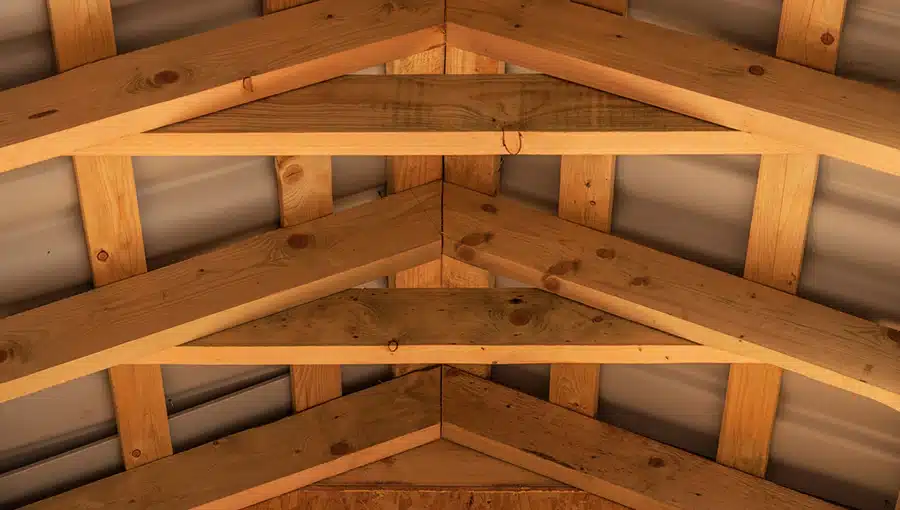Collar Tie

Definition: A collar (or rafter tie) is a horizontal structural member that connects two opposing roof rafters near the ridge or peak of the roof. Its primary purpose is to provide stability and prevent the rafters from spreading apart under the weight of the roof or external forces like wind or snow. Collar ties are typically installed in pairs and are an essential component of roof framing in many structures.
Why It Matters in Roofing:
- Structural Integrity: These ties help maintain the shape and stability of the roof by resisting outward thrust from the rafters. Without rafter ties, the roof structure could sag or collapse under heavy loads, such as snow accumulation or high winds.
- Preventing Spread: In gable roofs, the rafters naturally tend to push outward at the base due to gravity and load pressure. Collar ties counteract this force by tying the rafters together.
- Code Compliance: Many building codes require rafter ties in specific roof designs to ensure safety and structural soundness. For example, they may be mandatory in areas prone to heavy snowfall or high winds.
- Aesthetic Considerations: In some cases, these components are left exposed in finished attic spaces or cathedral ceilings to add architectural character and visual interest.
How It Works
Collar ties are typically installed about one-third to halfway down the rafters from the ridge board, depending on the roof design and local building codes.
They are usually made of wood or metal and are fastened securely to the rafters with nails, screws, or brackets.
By creating a triangular truss-like structure with the rafters, this ties distribute weight evenly and reduce stress on the roof frame.
Types of Collar Ties
Wooden
- The most common type, often made from dimensional lumber like 2x4s or 2x6s.
- Easy to install and cost-effective for residential construction.
Metal or plastic
- Used in modern or engineered roof systems for added strength and durability.
- Ideal for areas with extreme weather conditions or heavy roof loads.
Decorative
Exposed rafter ties can serve as a design feature in open-ceiling spaces, adding rustic or industrial charm.
Signs of Collar Tie Problems
If the structural connectors are improperly installed or damaged, you may notice the following issues:
- Sagging Roof: A drooping roofline indicates structural failure, possibly due to missing or weakened collar ties.
- Cracks in Walls or Ceilings: Stress on the roof frame can transfer to walls, causing cracks or separation.
- Rafter Spreading: Visible gaps between rafters or at the roof’s base suggest inadequate collar tie support.
Installation Best Practices
Follow Building Codes:
- Check local regulations for collar tie placement, size, and spacing requirements.
- In Canada, for example, the National Building Code (NBC) may specify minimum standards for roof framing.
Use Proper Fasteners:
- Secure collar ties with galvanized nails, screws, or metal brackets to prevent loosening over time.
Inspect During Roof Work:
- If replacing or repairing a roof, inspect refter ties for signs of rot, warping, or damage. Replace any compromised ties immediately.
Consider Load Factors:
- Ensure collar ties are strong enough to handle snow loads, wind pressure, and other environmental stresses specific to your region.
Combine with Other Supports:
- For added stability, use this accessory in conjunction with ridge beams, purlins, or other structural reinforcements.
Fun Fact
In traditional timber framing, rafter ties were often hand-carved and left exposed as a testament to craftsmanship. Today, they are still celebrated in modern architecture for their blend of functionality and aesthetic appeal!
See our works
Giving you a sense of what a metal roof will look like in your home of commercial property





